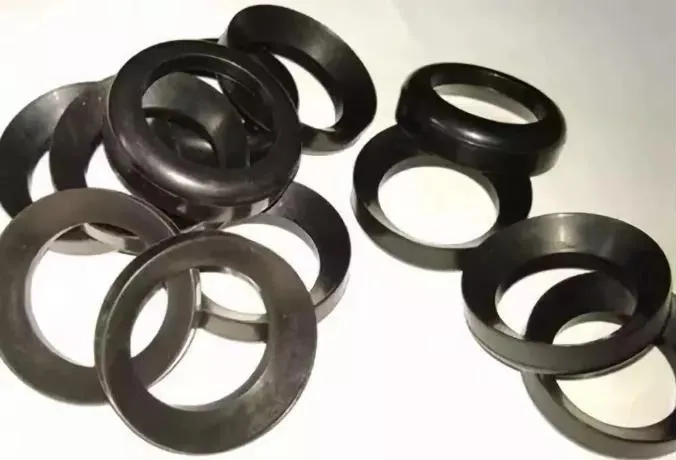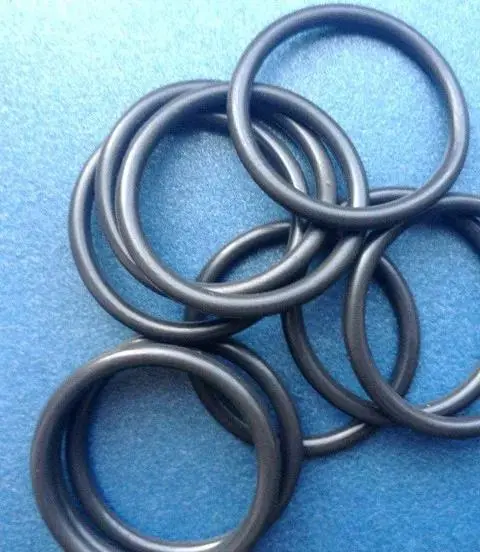Material comparison of several commonly used rubber sealing rings for valves
Seal ring refers to the ring cover composed of one or several parts, which is fixed on one ring or washer of the bearing and contacts with another ring or washer or forms a narrow labyrinth gap to prevent the leakage of lubricating oil and the invasion of foreign matters. Because its section is O- shaped, it is called O-shaped seal ring. What are the sealing rings made of? What are the characteristics?

1、 NBR nitrile rubber sealing ring
It is suitable for use in petroleum hydraulic oil, glycol hydraulic oil, diester lubricating oil, gasoline, water, silicon grease, silicon oil and other media. It is the most widely used and lowest cost rubber seal at present. Not suitable for polar solvents such as ketones, ozone, nitrohydrocarbons, MEK and chloroform. Generally, the temperature range is - 40 ~ 120 ℃.
It has excellent corrosion resistance, tear resistance, compression deformation resistance, ozone resistance, sunlight resistance and weather resistance. It has better wear resistance than NBR. It is suitable for washing machine and automobile engine system. It is not recommended to use in alcohol, ester or aromatic solution. Generally, the temperature range is - 40 ~ 150 ℃.
It has excellent heat resistance, cold resistance, ozone resistance and atmospheric aging resistance. It has good insulation performance. However, the tensile strength of rubber is worse than that of general rubber and does not have oil resistance. It is suitable for household appliances such as electric water heater, electric iron, microwave oven, etc. It is also suitable for all kinds of articles in contact with human body, such as water bottles, drinking fountains, etc. It is not recommended to be used in most concentrated solvents, oil products, concentrated acids and sodium hydroxide. Generally, the temperature range is - 55 ~ 250 ℃.
High temperature resistance is better than silicone rubber, with excellent weather resistance, ozone resistance and chemical resistance, and poor cold resistance. It is resistant to most oils and solvents, especially acids, aliphatic hydrocarbons, aromatic hydrocarbons, animal and vegetable oils. It is suitable for sealing requirements of diesel engine, fuel system and chemical plant. It is not recommended to use in ketones, low molecular weight esters and mixtures containing nitrate. Generally, the temperature range is - 20 ~ 250 ℃.

Its performance has the advantages of both fluororubber and silicone rubber. It has good oil resistance, solvent resistance, fuel oil resistance and high and low temperature resistance. It can resist the attack of oxygenated compounds, aromatic solvents and chlorinated solvents. Generally, the temperature range is - 50 ~ 200 ℃.
It has good weather resistance, ozone resistance, water resistance and chemical resistance. It can be used for alcohols and ketones, and also for sealing in high temperature steam environment. Generally, the temperature range is - 55 ~ 150 ℃.
It has excellent sunlight and weather resistance. It is not afraid of refrigerants such as dichlorodifluoromethane and ammonia. It is resistant to dilute acid and silicone grease lubricating oil, but it has a large expansion in mineral oil with low aniline point. It is easy to crystallize and harden at low temperature. It is suitable for all kinds of environments contacting with atmosphere, sunlight and ozone, as well as all kinds of fire-resistant and chemical corrosion-resistant sealing links. It is not recommended to use in strong acid, nitrohydrocarbon, ester, chloroform and ketone chemicals. Generally, the temperature range is - 55 ~ 120 ℃.
8、 IIR butyl rubber sealing ring
It has good air tightness, heat resistance, sunlight resistance, ozone resistance and insulation performance; it has good resistance to polar solvents such as alcohol, ketone, ester, etc., and can be exposed to animal and vegetable oil or oxide. Suitable for chemical resistant or vacuum equipment. It is not recommended to use with petroleum solvents, kerosene or aromatics. Generally, the temperature range is - 50 ~ 110 ℃.
It has excellent resistance to oil products, high temperature and weather resistance, but mechanical strength, compression deformation rate and water resistance are slightly poor. Generally used in automobile transmission system and power steering system. Not suitable for hot water, brake oil, phosphate. Generally, the temperature range is - 25 ~ 170 ℃.

10、 NR natural rubber sealing ring
Rubber products have good wear resistance, elasticity, breaking strength and elongation. However, it is easy to age in the air and become sticky in case of heat. It is easy to expand and dissolve in mineral oil or gasoline. It is alkali resistant but not acid resistant. It is suitable for use in automobile brake oil, ethanol and other liquid with hydrogen peroxide ion. Generally, the temperature range is - 20 ~ 100 ℃.
Polyurethane rubber has very good mechanical properties, and its wear resistance and high pressure resistance are far superior to other rubbers. It has good aging resistance, ozone resistance and oil resistance, but it is easy to hydrolyze at high temperature. Generally used for high pressure, wear- resistant sealing link. Generally, the temperature range is - 45 ~ 90 ℃.




